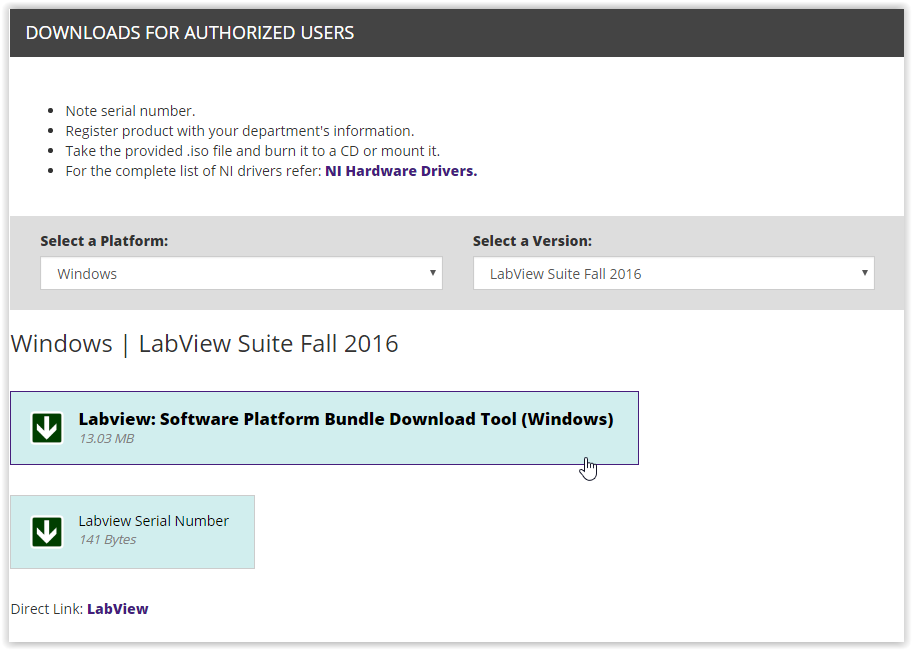

- HOW TO INSTALL LABVIEW STUDENT EDITION HOW TO
- HOW TO INSTALL LABVIEW STUDENT EDITION DRIVERS
- HOW TO INSTALL LABVIEW STUDENT EDITION SOFTWARE
HOW TO INSTALL LABVIEW STUDENT EDITION SOFTWARE
HOW TO INSTALL LABVIEW STUDENT EDITION DRIVERS
Follow the prompts in NI Package Manager to complete installation and skip the Install Software section below then, if applicable, continue to the Install Hardware Drivers (optional) section. Principles of installation order, selecting software to be installed, and next steps provided in this document are still applicable even if using NI Package Manager, although the exact steps and images presented below will not align perfectly. If you have downloaded a newer version of LabVIEW Student Edition, you may be prompted to use NI Package Manager to complete the installation. If however, you were installing these products individually, or later decide to install other software, you would need to note the installation order. Following the correct installation order is important as modules, toolkits, and drivers require the initial layer of the development system to be installed first if this installation order is not followed correctly, the LabVIEW Development System will not be able to access the functions available in those modules, toolkits, and drivers.īecause the Student Edition and Student Edition Software Suite are in fact suites, they bundle together several installers and install the software in the proper order automatically.
HOW TO INSTALL LABVIEW STUDENT EDITION HOW TO
Learn how to use NI myDAQ with three different software platforms, troubleshoot problems with your NI myDAQ, and ask your own questions on the discussion forums.Before you begin the installation process, it is important to review the installation order of NI software. Verify homework solutions with real signals using Multisim for circuit simulation and LabVIEW for automating measurements and performing signal processing. With NI myDAQ, the computer becomes an engineering instrument.ĭesigned by National Instruments with high-quality Texas Instruments Analog Integrated Circuits (ICs), the hardware system diagram and list of Texas Instruments IC's in the NI myDAQ user guide depicts how TI data converters, amplifiers, and interface and power management circuits were used in the design of NI myDAQ.Įxtend the device's capabilities with LabVIEW and Multisim. The myDAQ is a single device the has eight commonly used plug-and-play computer-based lab instruments.

The isolated DMM includes the capability to measure both AC and DC voltage and current as well as resistance, diode voltage, and continuity.

Each line is individually selectable for input or output.Ħ0 Volt Digital Multimeter (DMM) for Measuring Voltage, Current, and Resistance Use software-timed digital lines for interfacing both Low Voltage TTL (LVTTL) and 5 volt TTL digital circuits. USB powered for maximum mobility, myDAQ supplies enough power for simple circuits and sensors.Įight Digital Input and Digital Output Lines (3.3 Volt TTL-Compatible) +5, +15, and -15 Volt Power Supply Outputs (up to 500m Watts of Power) Two Differential Analog Input and Analog Output Channels (200 ks/s, 16 bit, +/- 10 Volts)Īccess matched analog input and output channels in a +/- 10 volt range through the screw terminal connectors or +/- 2 volt range through the 3.5mm audio jacks.


 0 kommentar(er)
0 kommentar(er)
